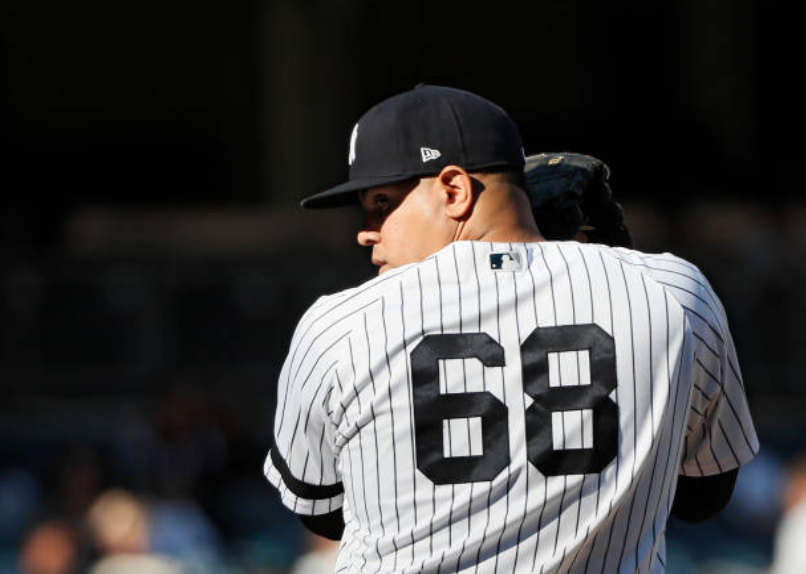As Yankees fans have witnessed, Dellin Betances can be one of the most dominant relievers in the game. However, they have also seen the flip side: where he looks completely lost out on the mound. From 2014-2015, Betances absolutely dominated, posting a 1.45 ERA across 174.0 innings pitched. During that span, he struck out 266 batters, equating to a 13.76 K/9.
The last two season haven’t been as dominant, unfortunately. From 2016-2017, he had a 2.98 ERA over 132.2 IP. He still struck out a lot of batters, with an absurd 15.33 K/9. Yet again, as many fans can attest to, Betances has not looked quite like his 2014-2015 self recently.
Betances throws two pitches: a four-seam fastball and a breaking ball. Many argue to exactly what that breaking ball is (a knuckle curve, slurve, curve?), but that is beside the point. Both individually are high-quality pitches. The fastball can touch 100-plus miles per hour and the breaking pitch has one of the highest spin rates in baseball. A big issue for Betances is command, especially of his curve. If he is unable to throw that pitch for a strike, he will be forced to use his fastball, likely behind in the count. While he can gas it up, major-leaguers are capable of doing damage to a 100 mile per hour fastball right down the middle.
When he has command of his breaking ball, it is a different story. Hitters are less likely to pummel a curveball down the middle than a fastball, simply because there is more of a chance that they just miss it due to the spin.
Another criticism of Betances is his inability to hold runners on. His large frame contributes to his slow delivery to home, allowing runners to get good jumps and steal bases off of him with relative ease.
Let’s delve into a few stats that could show reasons for his relative ineffectiveness recently.
O-Swing %, FB%, BB%
First, Betances’ out of the zone swing percentage (O-Swing%) dipped from 31 percent in 2016 to 24 percent in 2017. He is a pitcher who relies heavily on his breaking ball for getting swings and misses out of the zone, and last season he was not able to get as many swings out of the zone as usual.
Second, his flyball percentage shot up from 27 percent to 38 percent. Again, he likely wants his curveball to break down in the zone. If he is able to do that, it would seem difficult for a hitter to put the ball in the air. The increased flyballs tells me that perhaps he wasn’t locating that pitch where he wanted, hanging it more often than not. In fact, if you look at 2017 specifically, it can be seen that towards the end of the season when he was truly struggling, his flyball rate spiked.
Lastly, his walk percentage also increased in 2017, almost doubling from 9 percent to 17 percent. As aforementioned, when Betances can’t find the plate, he could be forced to turn to simply throwing his fastball down the middle in order to prevent walking the bases around. This, of course, can lead to disaster.
Looking at some other metrics, such as whiff percentage and isolated power against, can verify the above points.
Less whiffs, more extra-base hits
The charts below show that Betances was steadily getting fewer whiffs on both of his pitches as the season went on. This means that either he wasn’t getting hitters to chase out of the zone (as indicated by the decrease in his O-Swing %) and/or he was simply throwing more hittable pitches. And the isolated power graph exhibits how the latter was true: hitters were getting more extra bases per at-bat.
All in all, it remains to be seen what future Betances has with this team. He has definitely dropped in the pecking order behind the likes of Chad Green, David Robertson, and Tommy Kahnle, and could potentially be a trade candidate for the team down the stretch. When he’s right, he is one of the nastiest pitchers in the game; however, he just isn’t there at the moment.








